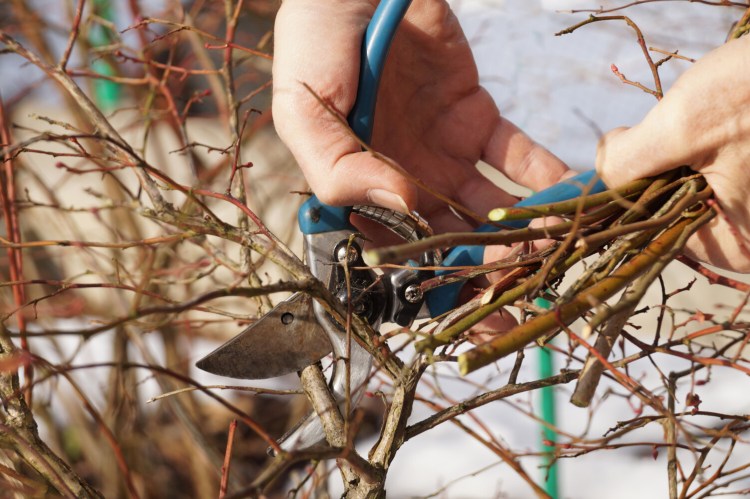March is the ideal time to prune small trees and shrubs.
Most of the deciduous varieties will suffer less damage from pruning now while they are dormant. Also, it is a lot easier to prune when the leaves are off, because you can see the structure of the branches more easily.
True, you could have done the work in February, but it is colder then and, usually, there is more snow on the ground. With March, a hint of spring is in the air, and the move to Daylight Saving Time last night means work can continue right up to the dinner hour.
I first began pruning shrubs in March after finding out that’s when apple growers prune their trees. If all the apple branches that sprout over the summer are allowed to remain, the tree will set more fruit than its roots can support. You’ll have more apples, but they’ll be smaller. You should also cut out most of the interior branches to give the fruit more sunlight.
We don’t have a lot of fruit trees, but that is the treatment our peach tree will get, as will the single apple tree remaining from when my wife, Nancy’s, grandparents owned the land.
Our high-bush blueberry bushes will need some work, too. We put in about a dozen three years ago, and I will just cut the dead out of those. You can tell if a branch is dead because the bark is gray, it may be peeling, and there are no small, reddish-maroon buds at the tip end of the branch.
For the older bushes, I will want six to 12 canes coming from the ground and, according to a University of Maine video by David Handley, those canes should range in age from 1 to 6 years old. Anything older, which would be large at the base, should come out.
Like apple trees, blueberry bushes should have an open center. First cut out any dead, brittle branches. Then cut out any branches that cross or rub against each other. The healthy branches, in addition to being reddish, will have plump, oval-shaped buds, which will produce the blossoms leading to the fruit. Never remove more than a third of each bush during pruning.
When it comes to flowering ornamental shrubs, I ignore the spring-blooming varieties. Although it would do the plants no harm to prune them now, it would mean fewer spring blossoms. So lilacs, azaleas, magnolias, rhododendrons and other spring blooming plants are pruned shortly after they flower.
This year, our viburnums will get special treatment, and we grow a lot of them: arrowwood, witherod, nannyberry and even a European snowball viburnum, which was one of the plants we put in the first spring we were in our house in 1976.
I had thought we lost the snowball viburnum in the late 1990s when the viburnum leaf beetle showed up in Maine. Both our American high-bush cranberry and the snowball bush died back to the ground, and we planted a rhododendron to replace the cranberry and a PeeGee hydrangea to replace the snowball.
The cranberry was never seen again, but a couple of years later the snowball sprouted from its roots, blossomed, again had its leaves eaten by the viburnum leaf beetle, but survived.

Watch out, little fella! Columnist Tom Atwell intends to vanquish the viburnum leaf beetle from his garden. Thijs de Graaf/Shutterstock
I’m not going to spray. But I am going to prune out as many of the pest egg clusters as I can. They show up on the under-side of the very tips of the branches, a straight line of football-shaped lumps extending about 6 inches long. I am going to cut all of them out of the snowball and check the other varieties, which are said to be resistant, to see if I can rid our property of the pest. Maybe I can keep the snowball’s leaves from getting Swiss-cheesed after it blossoms. Those twigs go into the regular trash, not compost or the brush pile, to insure that the eggs will be killed.
My other pest defense for March will be spraying the newly pruned blueberries with dormant oil to kill the winter moth. A pest that strikes hardwoods, especially oaks, but also maples and blueberries, the winter moth hasn’t been as bad the last couple years, but I would like to eliminate it. The oil isn’t poisonous, but it will smother the eggs. Dormant oil is a very fine version of the vegetable oil you probably have in your kitchen.
Once all of that is done, it will be just a few weeks until pea-planting time.
Tom Atwell is a freelance writer gardening in Cape Elizabeth. He can be contacted at: tomatwell@me.com.
Send questions/comments to the editors.



Comments are no longer available on this story